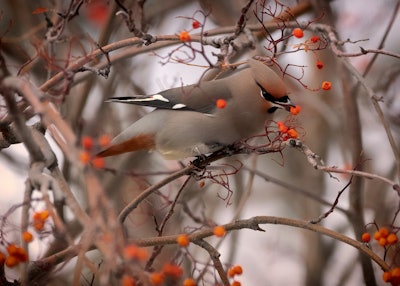 Photo: Pixabay
Photo: PixabayAmericans love their lawns. A whopping 45 million acres are covered by lawns – a size equivalent to that of New Jersey. And that’s not all. Every year, we continue to add 500 square miles of turfgrass.
Maintaining all that lawn is, without a doubt, a huge undertaking for landscapers. Luckily, there is a way to keep these costs in check – growing more native plants. Native plants are beautiful, are adapted to your region, and don’t require fertilizers or pesticides.
What’s more, they are great for birds and other wildlife.
Native plants provide nectar for bees, butterflies, and hummingbirds, they provide food for your feathered neighbors and they also provide them places to nest and shelter from harm.
So, which plants make for the best bird-friendly yard? Here are some ideas.
Native trees
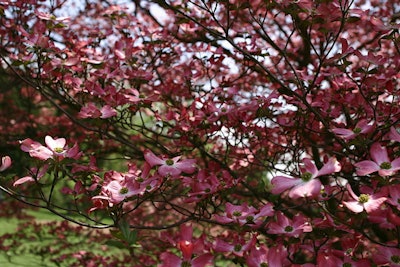 Dogwoods
DogwoodsPhoto: Wikimedia Commons
Dogwoods (Cornus spp.)
Dogwoods are native in various parts of the country. If you live in the eastern parts of the country, choose either Cornus florida or the Cornus alternifolia. And for those living in the Pacific Northwest, consider growing the native Cornus nuttallii. Birds such as the bluebirds, titmice and cardinals all like to dine on the fleshy fruit of dogwood trees.
______________________________________________________
Oak (Quercus spp.)
From California black oats to southern live oaks, oaks are a favorite for many people. They are beautiful and unique. They also provide shade for people and food for hundreds of varieties of animals and insects. If you decide to plant one in your customer’s yard, make sure it’s native to the area you live in. If you live in the Pacific Northwest, then consider planting the Oregon white oak. And if you’re living in the Southeast, consider the Shumard oak. And did we mention just how much birds love oaks? Acorn woodpeckers, flickers, mountain quail, wild turkeys, wood ducks, magpies and scrub jay all depend on oaks for food. Insects also feed on the wood, bark, acorns, twigs and leaves of oak trees.
______________________________________________________
Native shrubs
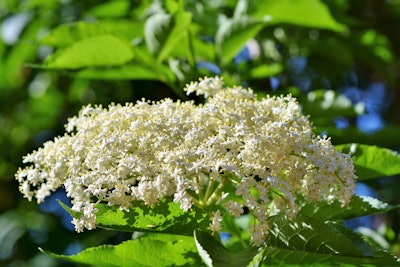 Elderberry
ElderberryPhoto: Pixabay
Elderberry (Sambucus spp.)
Elderberry has been used in folk medicine for centuries to treat sinusitis, colds and influenza. It also makes for a good landscape plant thanks to its showy shrub. Elderberry is native to the central and eastern U.S. and southeastern Canada and is winter hardy in USDA Hardiness Zones 5-8. Birds most commonly attracted to the American elderberry include the house finch, hermit thrush, gray catbird, Eastern towhee, Eastern phoebe, cedar waxwing and Baltimore oriole.
______________________________________________________
Buttonbush (Cephalanthus occidentalis)
Buttonbush is native to the eastern half of the United States and the wetlands of California. The plant has unique one-inch diameter white spherical flowers that give the appearance of a pincushion. Buttonbush attracts over 24 species of birds, including towhee, kingbird and robin. It’s also a nectar source, attracting butterflies such as hummingbirds and swallowtail.
______________________________________________________
Native vines
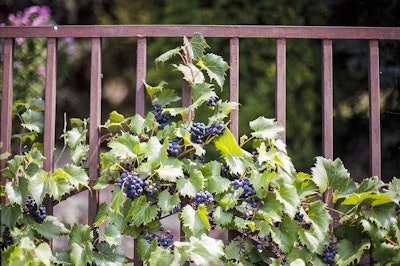 Virginia creeper
Virginia creeperPhoto: Pixabay
Virginia creeper (Parthenocissus quinquefolia)
Virginia creeper is a woody, deciduous vine that can be identified by its compound leaves with five leaflets. It’s often confused with poison ivy (Toxicodendron radicans). However, unlike Virginia creeper, poison ivy has three leaflets instead of five. In addition, it’s harmless to your skin. Virginia creeper is native to the Eastern parts of the country and the Great Plains. Birds commonly attracted to Virginia creeper include pine warbler, hermit thrush, Eastern phoebe, downy woodpecker, cedar waxwing, and American robin.
______________________________________________________
Trumpet honeysuckle (Lonicera sempervirens)
This is a vigorous, deciduous, twining vine that usually grows 10-15’ and is one of the showiest of the vining honeysuckles. It’s easily grown in average, medium moisture, well-drained soils in full sun. The vine is native to the Midwest, Southeast and Northeast. Birds that depend on the trumpet honeysuckle include the ruby-throated hummingbird, purple finch, house finch, hermit thrush, cedar waxwing and American robin.
______________________________________________________
Native flowering plants
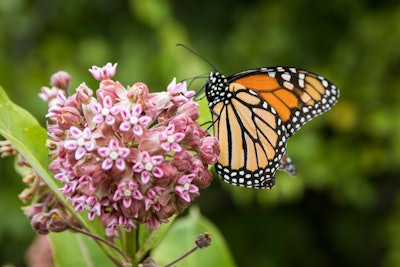 Milkweed
MilkweedMilkweed (Asclepias spp.)
Milkweed is a lovely wildflower and the sole host plant for monarch butterfly caterpillars. It’s named for the milky substance containing latex, that exudes from the plant when it’s damaged. Milkweed is native in most parts of the country. The ruby-throated hummingbird is one of the most commonly attracted birds to the plant.
______________________________________________________
Cardinal flower (Lobelia cardinalis)
The cardinal flower is a herbaceous perennial that may grow 4 to 5 feet tall. It’s named for the vibrant, red color of its flowers. Fewer native plants have flowers of such intense color as this common herbaceous perennial. This moisture-loving flowering plant is native in most parts of the country, including the Southwest, Midwest and East. The cardinal flower attracts hummingbirds due to its red color.
EDITOR’S NOTE: This article was written by Ryan Williamson of OnsiteProperty.com, a property management service in Fort Collins, Colorado.









